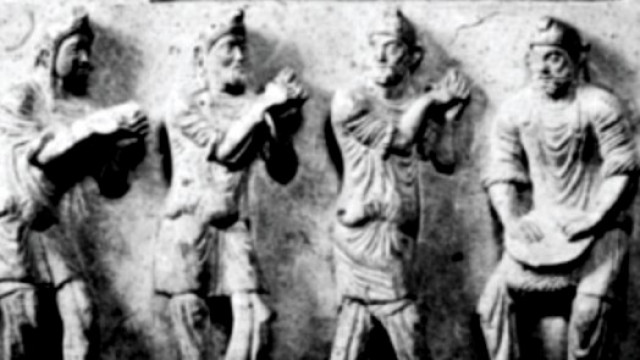Chipped away: Gandhara art

Ghulaam Mustafa is an expert in Islamic art and a renowned sculptor. He has received the Tamgha-e-Imtiaz to honour his achievements over a 50-year career. Mustafa believes that smugglers take advantage of artisans’ talent by selling replicas of Gandhara’s famous artwork abroad as ‘antiques’ at inflated prices. Illyas Muhammad Khan, a sculptor in Gandhara, confirmed Mustafa’s suspicions.
Khan was indignant as he believed that he was getting short-changed in the process. Khan said, “Smugglers colour the sculptures in such a way that they look historic and then transport these artworks abroad and to the metropolitan cities of Pakistan. Customers buy these items from Karachi, Peshawar and Islamabad believing them to be antiques.
The smugglers take away the rights of the artist.” Gandhara art faces extinction at the hands of smugglers and the Taliban Just as reports of the Buddha statues in Bamiyan being destroyed by the Taliban government in Afghanistan shocked everyone, Pakistan may soon become infamous for failing to protect its archaeological treasures.
Christopher Allbritton, in a December 2009 report in Time magazine, described the threat to Pakistan’s archaeological treasures. He reported that the preservation and upkeep of important sites such as Taxila has been affected by the security situation in the country. The Taxila museum, which was once a major tourist attraction, has received several threats from militants.
Nasir Khan, the museum’s curator, said that there have been warnings of a possible attack on the museum, and the security measures put into place were insufficient. “Militants are the enemies of culture,” he said, adding that if the security condition did not improve Pakistan’s cultural heritage would be lost forever.
The Gandhara civilisation, whose remnants stretch from Taxila to the Swat Valley to Bannu, is in danger of being lost altogether. In October 2007, as the Taliban cemented their hold on the Swat valley, they blasted the face of the Jehanabad Buddha. The 23-foot-high carving of the seated Buddha, dating from the 7th century, was regarded as the second most important Gandhara monument. Due to the security situation in the country, foreign governments have warned excavation teams not to visit the site and other key areas in the Swat valley.
The lack of security - and archaeologists - at the sites has made these areas vulnerable to vandals and illegal diggers, who have already damaged Kashmir Smast, a Hindu site northwest of Islamabad. In September 2008, the Swat museum was ransacked by militants, but fortunately the most valuable antiquities had already been removed by the museum’s curator.
That same month, the Taliban attempted to blow up 7th century Buddhist relics twice and damaged a rock engraved with images of Buddha that had been a pilgrimage site for centuries. If Pakistan is to rebuild its tourist industry, it is essential that Taxila and other historical sites be managed properly and protected from harm. The move by the government, to start a railway service between Rawalpindi and Taxila that will be extended to include stops at sites such as Attock Khurd, Changa Manga, Kasur, Harrapa and Derawar fort, will only be successful if there is anything left to see at these locations.
Taxila under threat
The preservation and upkeep of important sites such as Taxila has been affected by the security situation in the country. The Taxila museum, which was once a major tourist attraction, has received several threats from militants. Nasir Khan, the museum’s curator, said that there have been warnings of a possible attack on the museum, and the security measures put into place were insufficient.
Sculptors Cheated
Ghulaam Mustafa is an expert in Islamic art and a renowned sculptor. He believes that smugglers take advantage of artisans’ talent by selling replicas of Gandhara’s famous artwork abroad as ‘antiques’ at inflated prices.
- WITH ADDITIONAL REPORTING BY SABA IMTIAZ


















COMMENTS
Comments are moderated and generally will be posted if they are on-topic and not abusive.
For more information, please see our Comments FAQ